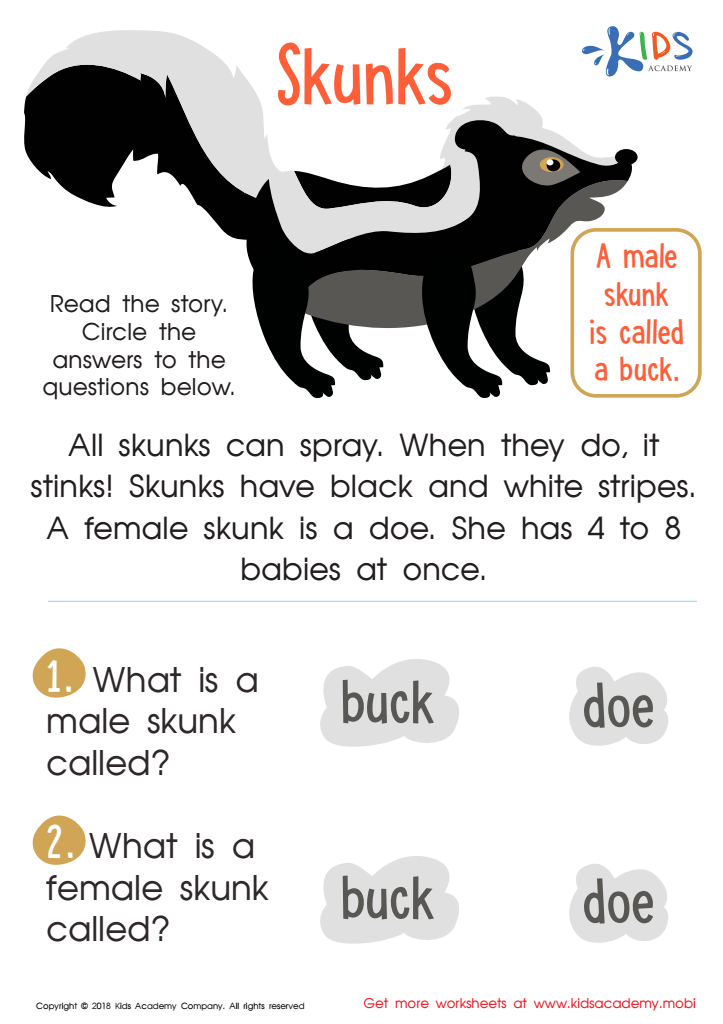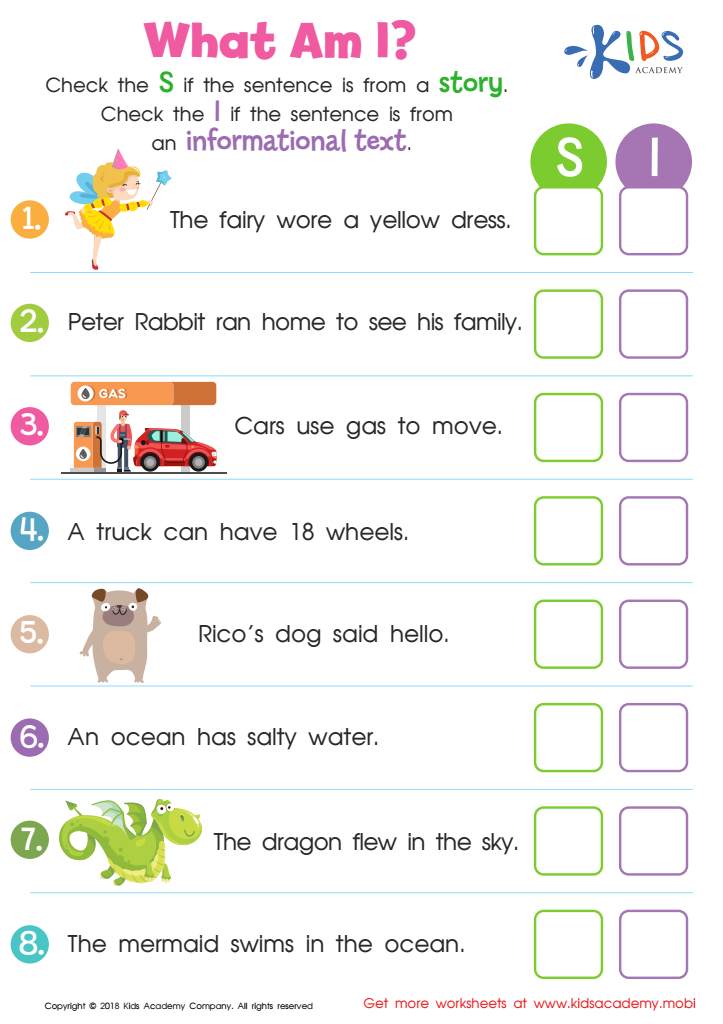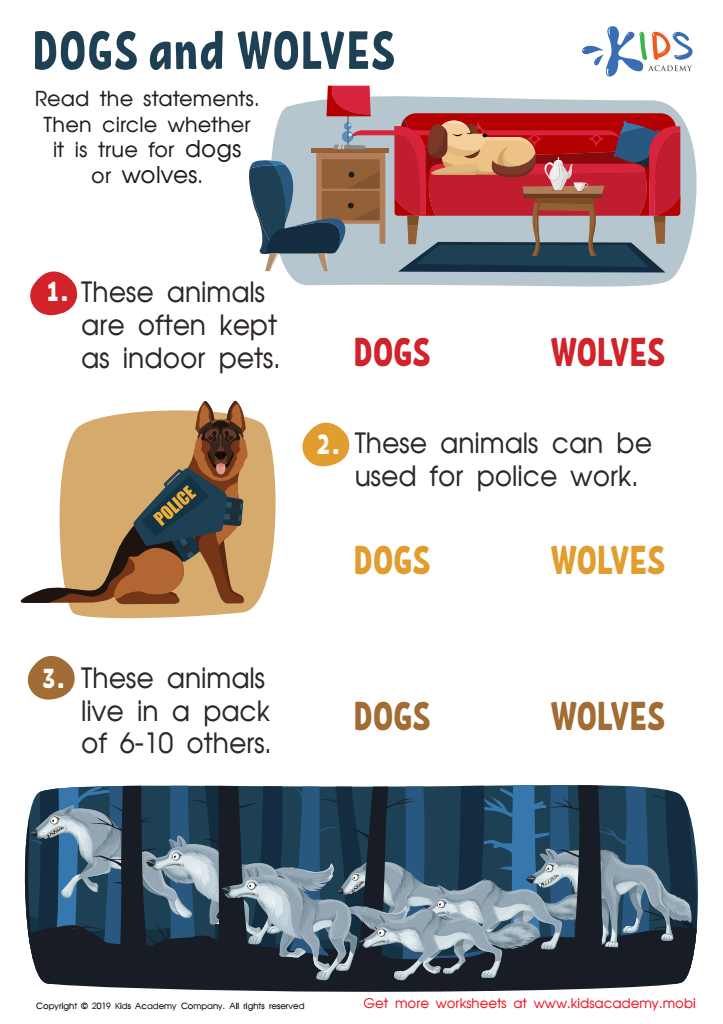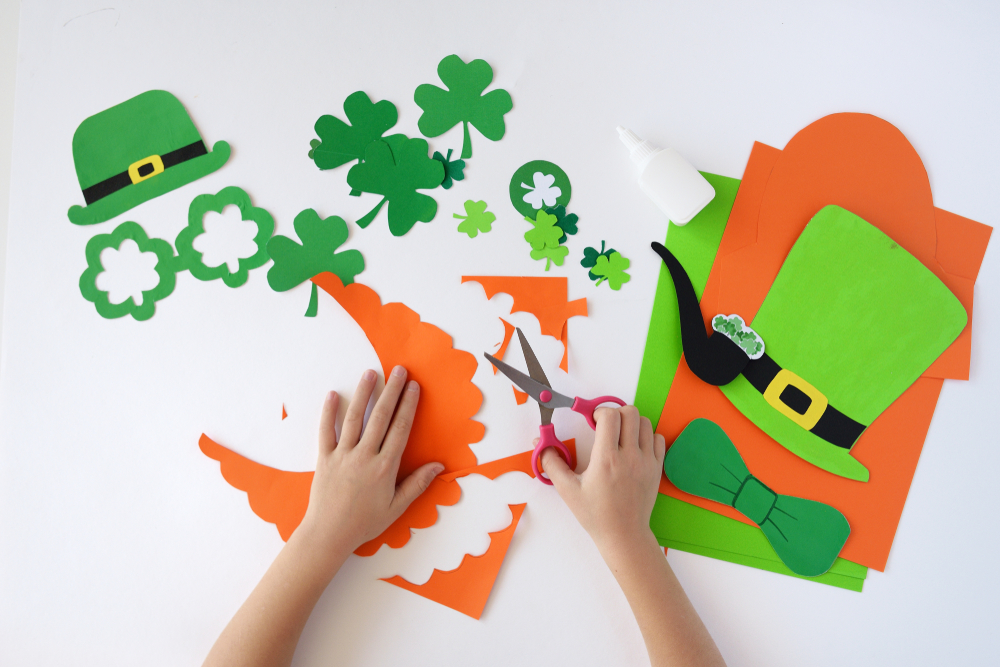Animal identification Normal Reading Worksheets for Ages 5-7
3 filtered results
-
From - To
Discover our engaging Animal Identification Normal Reading Worksheets, designed specifically for children ages 5-7. These interactive worksheets help young learners develop essential reading skills while exploring the fascinating world of animals. Each activity encourages them to identify various animals through fun visuals and informative text, promoting vocabulary growth and comprehension. Suitable for both classroom and home learning environments, our worksheets make reading enjoyable and interactive. Perfect for enhancing literacy skills, these resources will ignite a love for reading while sparking curiosity about animals. Download our Animal Identification worksheets today, and support your child's educational journey in a fun and effective way!


Skunks Worksheet


What Am I? Worksheet


Dogs and Wolves Worksheet
Animal identification is an essential concept for young learners aged 5-7, and parents or teachers should prioritize it for several reasons. First, understanding different animals helps children develop observational skills. Recognizing various species fosters curiosity and encourages exploration of the natural world. Such engagement not only promotes literacy as children learn animal names and characteristics but also enhances vocabulary development in a fun, intriguing way.
Second, learning about animal identification instills a sense of empathy in children. By recognizing animals and understanding their habitats and behaviors, children learn to respect and care for living beings. This connection can lead to discussions about conservation, importance of biodiversity, and responsible pet ownership, nurturing a generation that values the environment.
Furthermore, animal identification can be linked to other subjects, such as science and art, broadening learning opportunities. Teachers can integrate it into lessons about ecosystems, life cycles, or creative projects, making education multifaceted.
Lastly, shared activities around animal identification can strengthen bonds. Parents reading animal stories or exploring the outdoors can create memorable experiences while promoting conversations about nature. Ultimately, ensuring that children grasp the concept of animal identification benefits their education, emotional growth, and awareness of the world around them.

 Assign to My Students
Assign to My Students




















